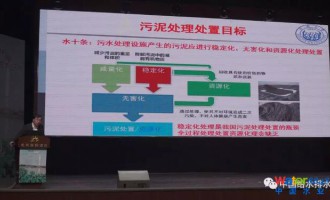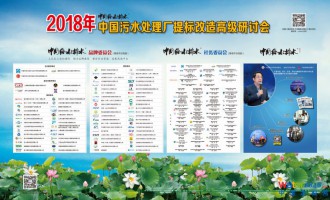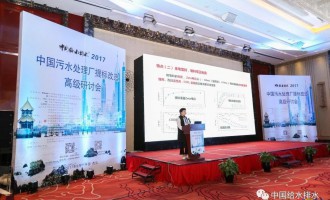Sustainable Nutrient Removal With IFAS
The Client’s Needs The City of Cocoa Beach faced some challenges. USEPA had established Total Maximum Daily Loads (TMDLs) for nutrients and dissolved oxygen (DO) in the Indian River and Banana River Lagoons in East Central Florida. The city’s 6.0 MGD water reclamation plant would therefore need to significantly reduce nutrients in its effluent. Due to its location, any modifications would need to be within the existing plant boundaries. Construction would need to take place while the plant remained online. And the city would need to continue to serve its reclaimed water system that beneficially reclaimed over 90% of the effluent. To these challenges, the city added some additional goals. At the same time the city wanted to identify the lowest cost solution to meet the effluent limits, the city wished to reduce energy consumption and maintain the existing operations and staffing requirements.
The Solution
Given the need to create pre-anoxic and post-anoxic treatment zones with minimal space, and factoring in cost, the City of Cocoa Beach selected the AnoxKaldnes™ Hybrid Biofilm Activated Sludge (Hybas™) IFAS technology. An aerobic SRT of 2.25 days was needed for optimal growth of Phosphorous Accumulating Organisms (PAOs). To achieve optimum rates of nitrification and meet the effluent TN limit of 3 mg/L, two aerobic reactors in series were designed. The first was an IFAS reactor with media and the second was an activated sludge reactor without media.
The final design retrofitted six existing A/O basins into six parallel IFAS process trains. Each process train consisted of one pre-anoxic basin, one aerobic IFAS basin, and one aerobic activated sludge basin without media. In order to achieve an effluent TN of less than 3 mg/L, two post-anoxic process trains, each with two post-anoxic basins in series, were constructed. The total SRT in the new constructed post-anoxic basin was 0.5 days, and the total SRT in the entire system was around 4 days. The total aerobic fraction is about 55% of the total volume.
Process Description
The project goals included sustainability and efficiency. The biological process and the equipment selected achieved both. Benchmarks often used to measure sustainability and efficiency are nutrient reduction, residuals production and energy consumption. Upon project completion, the plant saw a decrease in nutrient mass, sludge residuals and unit energy consumption. The data collected proves the reduction for all three parameters.
The Hybas process effectively reduced effluent nitrogen from an average of 8.64 mg/L in 2011 to 1.62 mg/L in 2013. This represented an 81% reduction in effluent TN values. The pre-IFAS baseline value for effluent total phosphorous (TP) was approximately 1.6 mg/L. After project completion and prior to commencing alum feed, the effluent values for TP were 0.46, 0.36 and 0.40 mg/L. This represented a 32% reduction in TP and exceeded the design limit of 1.0 mg/L.
Results
The combination of process design and equipment selection resulted in a completed treatment facility with equal hydraulic treatment capacity, advanced nutrient removal capability, and decreased power requirements. The reduction in energy usage is evidenced by a decrease in connected horsepower and a significantly lower unit power consumption. In terms of connected horsepower, the total load assigned to blowers, mixers and pumps was reduced by 220 HP. Prior to construction, the total rated horsepower for all blowers, mixers and pumps was approximately 1,200 HP. In the post-construction condition, the total connected load was reduced to 980 HP. This represented a reduction of approximately 18% in terms of connected load. With the AnoxKaldnes Hybas IFAS system, the City of Cocoa Beach met the challenges of tighter nutrient regulations, site constraints, and operating conditions. And the project met the city’s goals to meet these challenges with a simultaneous decrease in energy use. On top of that, the city did not need to increase operations time or staffing to meet these goals. With the AnoxKaldnes Hybas IFAS system, the city is now meeting stricter nutrient regulations – and doing it sustainably.
可持续发展与ifa营养物去除
客户的需要可可海滩的城市面临着一些挑战。构成了最大程度上的每日总负荷(TMDLs)营养物质和溶解氧(做)在印度河和香蕉河泻湖在佛罗里达州中部东部。城市的6.0 MGD水回收工厂将因此需要显著减少营养物质的废水。由于它的位置,任何修改将需要在现有工厂范围内。建设需要而进行植物仍然在线。和城市需要继续为其再生水系统实益再生废水的90%以上。这些挑战,城市添加了一些额外的目标。同时城市想确定最低成本解决方案,以满足污水限制,城市希望减少能源消耗和维护现有业务和人员需求。
解决方案
考虑到需要创建pre-anoxic和post-anoxic治疗区以最小的空间,考虑到成本,可可海滩选择AnoxKaldnes™混合生物膜活性污泥(Hybas™)ifa技术。2.25天的有氧SRT最佳生长所需的磷积累生物(有关)。实现最佳的硝化率和满足废水TN限制3 mg / L,串联两个有氧反应堆设计。首先是一个ifa反应堆与媒体,第二是活性污泥反应器没有媒体。
最终的设计改造现有的A / O盆地六到六个平行ifa过程训练。每个进程的火车由一个pre-anoxic盆地,一个有氧ifa盆地,一个好氧活性污泥池没有媒体。为了实现废水TN的不到3 mg / L,两列车post-anoxic过程,每一个系列,着两个post-anoxic盆地构造。新构造总SRT post-anoxic盆地是0.5天,和整个系统的总SRT 4天左右。总好氧部分总量的55%左右。
过程描述
项目目标包括可持续性和效率。生物过程和设备选择的实现。基准用来测量可持续性和效率往往是营养减少,剩余生产和能源消耗。项目完成后,植物的营养质量,减少污泥残差和单位能耗。收集到的数据证明了所有三个参数的降低。
Hybas过程有效地降低废水氮从2011年的平均8.64毫克/升到2013年的1.62 mg / L。这代表一个出水TN值降低81%。pre-IFAS基线值废水总磷(TP)大约是1.6 mg / L。项目完成后,开始之前明矾饲料,TP的流出物值分别为0.46,0.36和0.40 mg / L。这代表TP减少32%,超过设计极限为1.0 mg / L。
结果
工艺设计和设备选择的组合导致完成处理设施以同样的液压处理能力,先进的营养物去除能力,减少电力需求。减少能源使用是可以减少连接马力和显著降低单位能耗。连接的马力,总负载分配给鼓风机,搅拌机和水泵降低了220马力。在施工之前,总对所有风机额定功率,搅拌机和水泵大约是1200马力。post-construction条件,总连接负载减少到980马力。这代表减少大约18%的连接负载。与AnoxKaldnes Hybas ifa系统,可可海滩的城市遇见的挑战更严格的营养规定,网站的限制,和操作条件。和项目满足了城市的目标来应对这些挑战的同时减少能源的使用。最重要的是,这个城市不需要增加操作时间和人力资源,以满足这些目标。与AnoxKaldnes Hybas ifa系统,现在会议更严格的营养法规和可持续地这样做。









